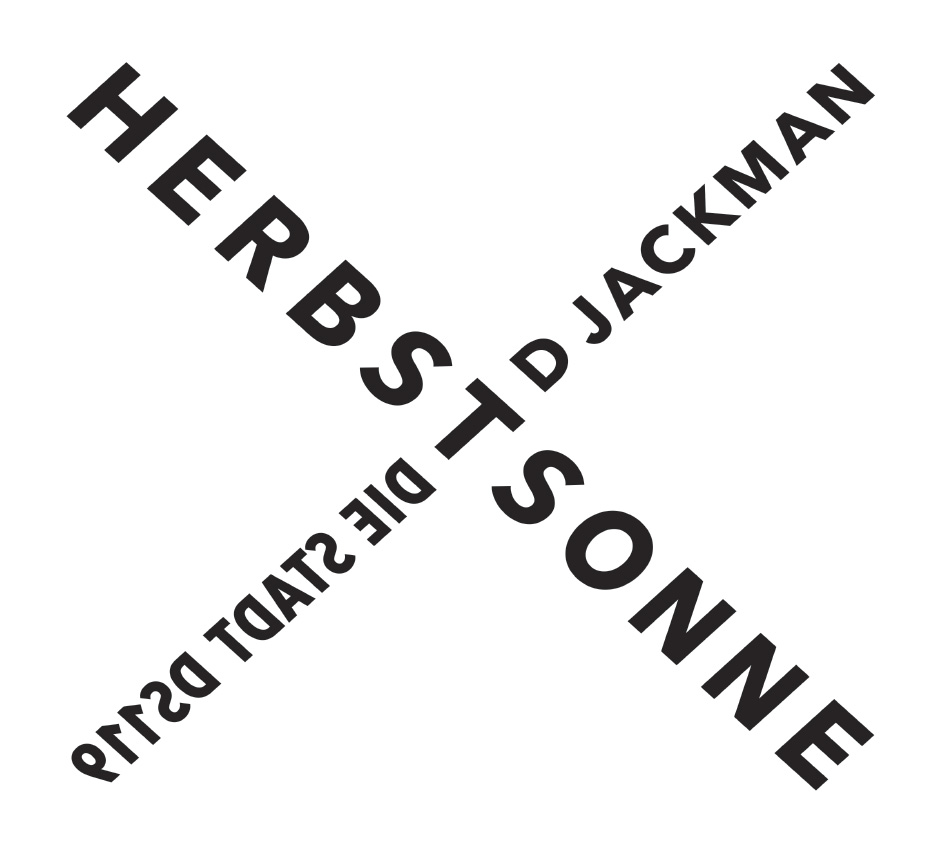 Always enigmatic, the latest work from David Jackman is a single 47 minute piece that, for some reason, has been issued under his own name rather than Organum. I have never been clear as to what determines the name that will go on the record, and this is the first Jackman release since a split 7" (with Organum) in 2005. Additionally, the overall feel of the piece is distinct, but not far removed from the Amen/Sanctus/Omega trilogy from 2006-2007. Deliberately minimalist in arrangement, but with an unquestionable dedication to the finest detail of sounds, it is another work of fascinating beauty by the legendary artist.
Always enigmatic, the latest work from David Jackman is a single 47 minute piece that, for some reason, has been issued under his own name rather than Organum. I have never been clear as to what determines the name that will go on the record, and this is the first Jackman release since a split 7" (with Organum) in 2005. Additionally, the overall feel of the piece is distinct, but not far removed from the Amen/Sanctus/Omega trilogy from 2006-2007. Deliberately minimalist in arrangement, but with an unquestionable dedication to the finest detail of sounds, it is another work of fascinating beauty by the legendary artist.
Hotter than July. This week's episode has plenty of fresh new music by Marie Davidson, Kim Gordon, Mabe Fratti, Guided By Voices, Holy Tongue meets Shackleton, Softcult, Terence Fixmer, Alan Licht, pigbaby, and Eiko Ishibashi, plus some vault goodies from Bombay S Jayashri and Pete Namlook & Richie Hawtin. Solstice moon in West Midlands, UK photo by James. Get involved: subscribe, review, rate, share with your friends, send images! |


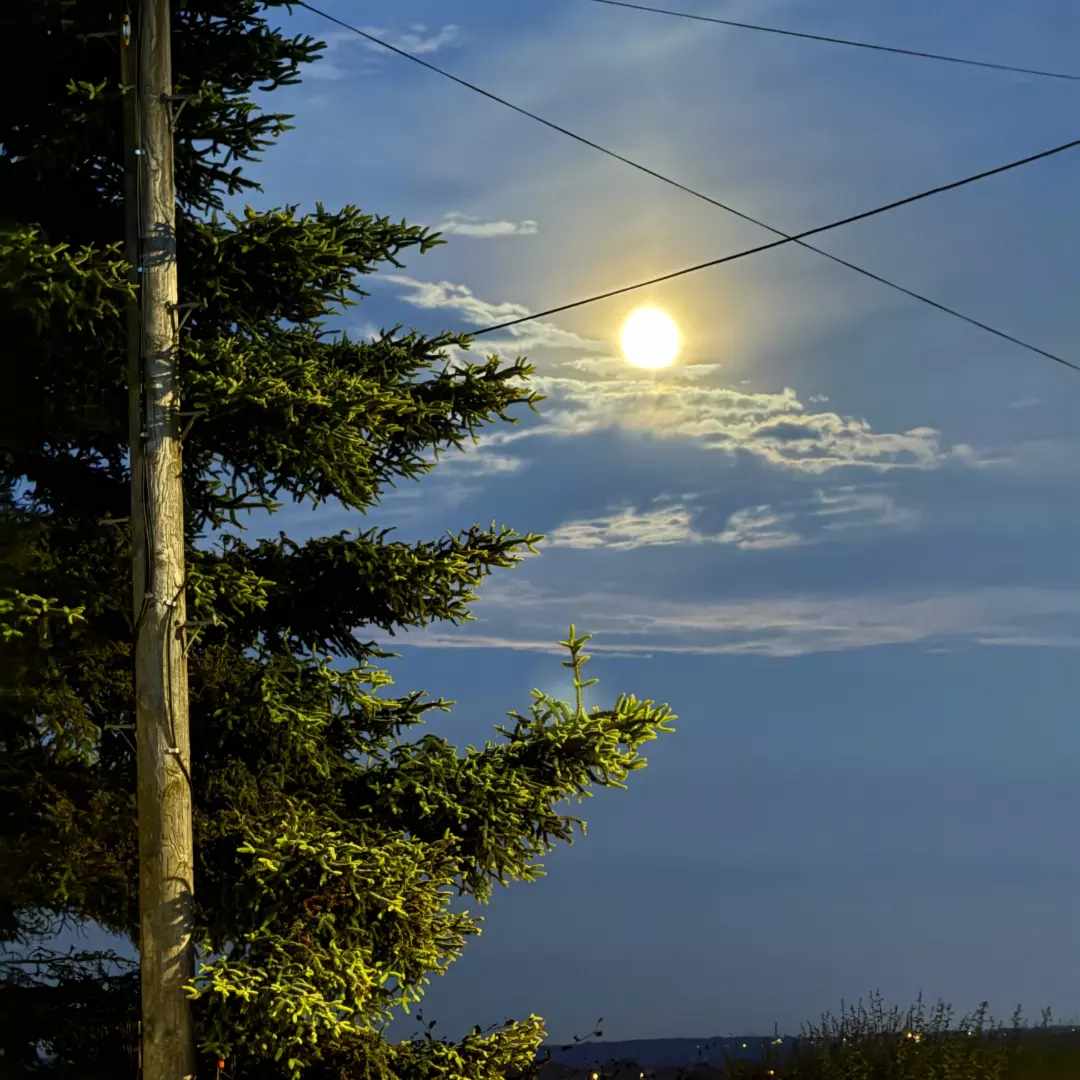
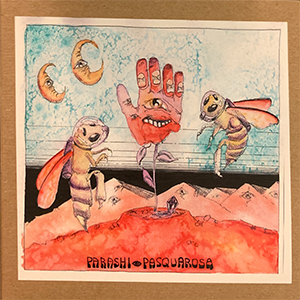 The town of Clifton Park, New York, does not have anything resembling an experimental music scene, other than the basement studio of Mike Griffin. Under the Parashi name, he has been building up an impressive catalog of releases running the gamut from ambient spaciousness to pummeling distortion. These two collaborative releases make it clear how well his personal brand of electronic mangling works alongside another artist as well, and with a contrast from Anthony Pasquarosa's largely guitar-focused work and the darker electronics of Noise Nomads, showcases his versatility.
The town of Clifton Park, New York, does not have anything resembling an experimental music scene, other than the basement studio of Mike Griffin. Under the Parashi name, he has been building up an impressive catalog of releases running the gamut from ambient spaciousness to pummeling distortion. These two collaborative releases make it clear how well his personal brand of electronic mangling works alongside another artist as well, and with a contrast from Anthony Pasquarosa's largely guitar-focused work and the darker electronics of Noise Nomads, showcases his versatility.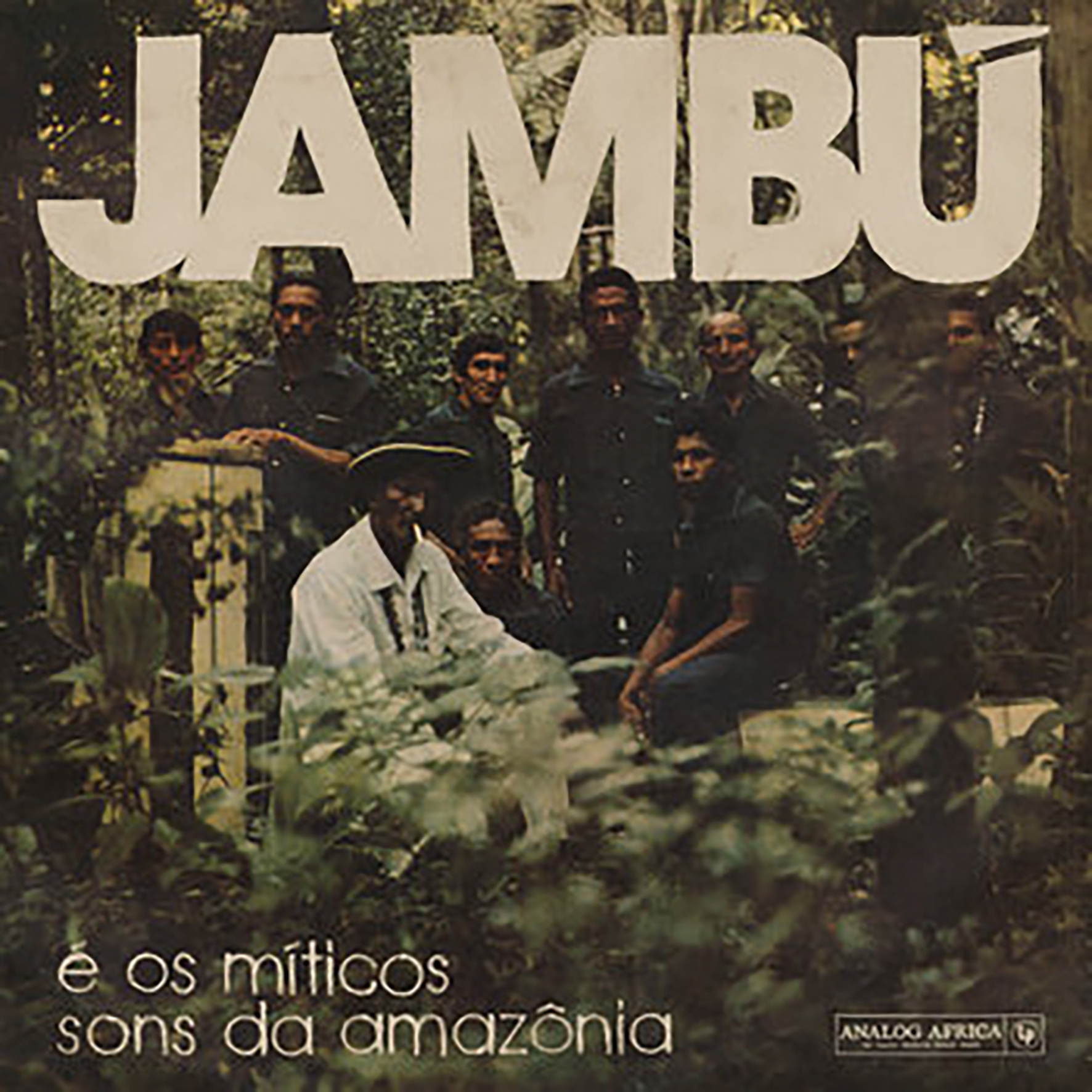 This latest collection from Analog Africa is another detour of sorts, as curators Samy Ben Redjeb and Carlo Xavier headed to Brazil for a very deep dive into the underheard musical treasures of Belém. The genres covered (Carimbó, Samba-De-Cacete, Siriá, Bois-Bumbás and bambiá) were all entirely new to me, but I felt better when I learned that they were all fairly new to Redjeb as well. Characteristically, however, he was drawn to the Amazon-bordering coastal city due to its unique collision of cultures and therein lies the African connection: Belém was a crucial port for the sugar, coffee, and rubber trades, which resulted in plenty of West African slaves being sent to the region. Those that managed to escape often fled to outlaw settlements called quilombos where African religions and cultural traditions established a tenacious foothold (including those of Redjeb's beloved Benin). Naturally, those cultures evolved into something unique over the years and the best pieces on Jambú capture quite a wonderful marriage of relentlessly propulsive Brazilian grooves and African rhythms (though the latter is not quite as prominent as I would have expected).
This latest collection from Analog Africa is another detour of sorts, as curators Samy Ben Redjeb and Carlo Xavier headed to Brazil for a very deep dive into the underheard musical treasures of Belém. The genres covered (Carimbó, Samba-De-Cacete, Siriá, Bois-Bumbás and bambiá) were all entirely new to me, but I felt better when I learned that they were all fairly new to Redjeb as well. Characteristically, however, he was drawn to the Amazon-bordering coastal city due to its unique collision of cultures and therein lies the African connection: Belém was a crucial port for the sugar, coffee, and rubber trades, which resulted in plenty of West African slaves being sent to the region. Those that managed to escape often fled to outlaw settlements called quilombos where African religions and cultural traditions established a tenacious foothold (including those of Redjeb's beloved Benin). Naturally, those cultures evolved into something unique over the years and the best pieces on Jambú capture quite a wonderful marriage of relentlessly propulsive Brazilian grooves and African rhythms (though the latter is not quite as prominent as I would have expected). As befits the curious and unpredictable arc of His Name is Alive, this first installment of a planned trilogy of Warren Defever's adolescent/teenage tape experiments is a truly wonderful and bewildering revelation. Defever must have been one hell of a precocious 10-year-old back in 1979, as his formula of combining field recordings, copious reverb, and samples of records played at the wrong speeds would have easily been strong enough to build an entire career on–I daresay it was a positively Basinski-esque flash of inspiration. Instead, however, Defever opted to move onto more song-based work and this side of his artistry was relegated to some dusty, long-forgotten boxes, which I suppose worked out quite well too. These lovely, haunted sounding soundscapes would have made quite a huge impression if they had been released during the band's 4AD heyday though: the liner notes amusingly suggest that Defever accidentally invented shoegaze while trying to make new age music. Fortunately, these elegantly blurred miniatures still sound absolutely wonderful today, even if the window has passed in which Defever might have been hailed as one of the most important and influential voices in ambient music (or as a proto-Slowdive shoegaze savant).
As befits the curious and unpredictable arc of His Name is Alive, this first installment of a planned trilogy of Warren Defever's adolescent/teenage tape experiments is a truly wonderful and bewildering revelation. Defever must have been one hell of a precocious 10-year-old back in 1979, as his formula of combining field recordings, copious reverb, and samples of records played at the wrong speeds would have easily been strong enough to build an entire career on–I daresay it was a positively Basinski-esque flash of inspiration. Instead, however, Defever opted to move onto more song-based work and this side of his artistry was relegated to some dusty, long-forgotten boxes, which I suppose worked out quite well too. These lovely, haunted sounding soundscapes would have made quite a huge impression if they had been released during the band's 4AD heyday though: the liner notes amusingly suggest that Defever accidentally invented shoegaze while trying to make new age music. Fortunately, these elegantly blurred miniatures still sound absolutely wonderful today, even if the window has passed in which Defever might have been hailed as one of the most important and influential voices in ambient music (or as a proto-Slowdive shoegaze savant).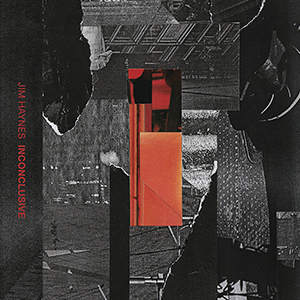 Compared to the last two albums I have heard from the always-fascinating Jim Haynes, this new tape features him pushing his penchant for rusting, decaying sounds into a slightly new direction. Always one for tactile, crackling sounds and unsettling noises, Throttle and Calibration and Flammable Materials From Foreign Lands were colder, sparser affairs that heavily featured field recordings and a distinct sense of isolation. Inconclusive, however, is a more commanding and forceful cassette. Besides featuring Haynes back into chaotic, harsher noise territories, it also shows him working in more rhythmic, vaguely industrial and power electronics sounding contexts as well.
Compared to the last two albums I have heard from the always-fascinating Jim Haynes, this new tape features him pushing his penchant for rusting, decaying sounds into a slightly new direction. Always one for tactile, crackling sounds and unsettling noises, Throttle and Calibration and Flammable Materials From Foreign Lands were colder, sparser affairs that heavily featured field recordings and a distinct sense of isolation. Inconclusive, however, is a more commanding and forceful cassette. Besides featuring Haynes back into chaotic, harsher noise territories, it also shows him working in more rhythmic, vaguely industrial and power electronics sounding contexts as well.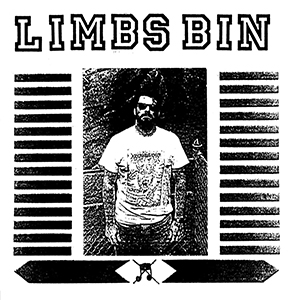 Gleefully jumping between noise, grindcore, power electronics, and just plain bizarreness, Josh Landes’s Limbs Bin is the premier noise artist of Pittsfield, Massachusetts, and with releases such as this 7" it is not hard to see why. The components of Blast Anthemics for a New Generation of Ecstatic Youth are pretty standard: feedback electronics, drum machine blast beats, and a healthy helping of yelling. It is the way Landes mixes these together, however, along with an appropriate amount of silliness, which makes this single stand out.
Gleefully jumping between noise, grindcore, power electronics, and just plain bizarreness, Josh Landes’s Limbs Bin is the premier noise artist of Pittsfield, Massachusetts, and with releases such as this 7" it is not hard to see why. The components of Blast Anthemics for a New Generation of Ecstatic Youth are pretty standard: feedback electronics, drum machine blast beats, and a healthy helping of yelling. It is the way Landes mixes these together, however, along with an appropriate amount of silliness, which makes this single stand out.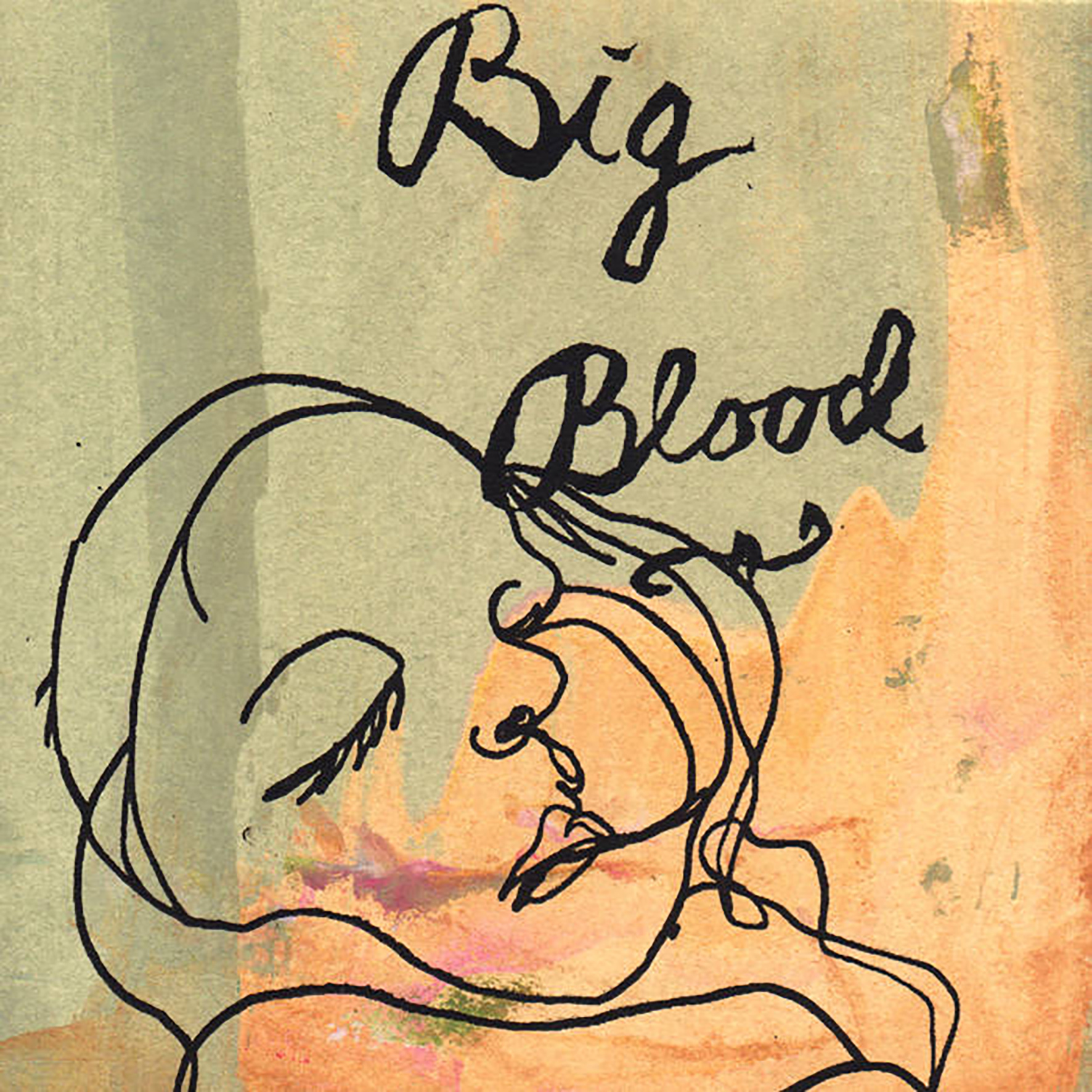 Caleb Mulkerin and Colleen Kinsella’s Big Blood project has consistently been one of the most delightfully unique and life-affirming bands in the American underground over the last decade or so. Admittedly, their major releases have been increasingly prickly, weird, and experimental in recent years, which likely explains why the duo are not nearly as appreciated as they should be: the current era is definitely not the easiest entry point for the curious. Prior to the run of ambitious concept albums that kicked off with 2013's Radio Valkyrie, however, the duo self-released quite a transcendent run of brilliant songs on homemade CD-Rs. It is not an exaggeration to say that the ramshackle back porch psychedelia of those early years yielded some of the most beautiful songwriting that my ears have ever heard. This 2006 release is where that hot streak first began, preceding Fire on Fire's brief but wonderful lifespan on Young God Records by a year. How they managed to be the driving creative force between two great bands at once is beyond me, but Mulkerin and Kinsella managed to churn out at least four stone-cold masterpieces in the span of two years and this was the first of them.
Caleb Mulkerin and Colleen Kinsella’s Big Blood project has consistently been one of the most delightfully unique and life-affirming bands in the American underground over the last decade or so. Admittedly, their major releases have been increasingly prickly, weird, and experimental in recent years, which likely explains why the duo are not nearly as appreciated as they should be: the current era is definitely not the easiest entry point for the curious. Prior to the run of ambitious concept albums that kicked off with 2013's Radio Valkyrie, however, the duo self-released quite a transcendent run of brilliant songs on homemade CD-Rs. It is not an exaggeration to say that the ramshackle back porch psychedelia of those early years yielded some of the most beautiful songwriting that my ears have ever heard. This 2006 release is where that hot streak first began, preceding Fire on Fire's brief but wonderful lifespan on Young God Records by a year. How they managed to be the driving creative force between two great bands at once is beyond me, but Mulkerin and Kinsella managed to churn out at least four stone-cold masterpieces in the span of two years and this was the first of them. It has been a hell of a long time since Nurse With Wound last surfaced with a proper new album on United Dairies, but 2019 is looking to be an uncharacteristically prolific year with the epic Trippin' Music looming on the horizon. In the meantime, however, there is the endearingly strange The Vursiflenze Mismantler, which pairs Steven Stapleton and Andrew Liles with Australian vocal artist James Worse. It is very hard to imagine an artist more attuned to NWW's surrealist whimsy than Worse, as he is best known for his poetry crafted almost entirely from made-up and nonsensical words. Louis Carroll's "The Jabberwocky" is the obvious and unavoidable reference point with Worse's "Worsicles," but his poetry only escapes the gleeful mutilations of Stapleton and Liles on one piece here. The rest of the album is a Dada-esque collage of chopped, digitized, and gurgling vocal sounds that occasionally coheres into some unlikely and delightful grooves.
It has been a hell of a long time since Nurse With Wound last surfaced with a proper new album on United Dairies, but 2019 is looking to be an uncharacteristically prolific year with the epic Trippin' Music looming on the horizon. In the meantime, however, there is the endearingly strange The Vursiflenze Mismantler, which pairs Steven Stapleton and Andrew Liles with Australian vocal artist James Worse. It is very hard to imagine an artist more attuned to NWW's surrealist whimsy than Worse, as he is best known for his poetry crafted almost entirely from made-up and nonsensical words. Louis Carroll's "The Jabberwocky" is the obvious and unavoidable reference point with Worse's "Worsicles," but his poetry only escapes the gleeful mutilations of Stapleton and Liles on one piece here. The rest of the album is a Dada-esque collage of chopped, digitized, and gurgling vocal sounds that occasionally coheres into some unlikely and delightful grooves. Recently reissued for the second time on Spectrum Spools, Robert Turman's Flux is widely regarded to be one of the most unique and essential releases to emerge from the ‘80s cassette underground. Originally self-released back in 1981, Flux was Turman's solo debut after a brief tenure in NON's earliest incarnation, but the only common ground the two projects share is a general fondness for tape loops and vintage exotica. Nearly four decades later, Flux's tender, bleary, and hiss-soaked minimalism no longer feels particularly radical, but the passing of time has done nothing to diminish the album's simple and gently hallucinatory beauty. Flux casts quite a lovely and hypnotic spell, conjuring an aesthetic that lies somewhere between Andrew Chalk and a dream set in an ancient Buddhist temple.
Recently reissued for the second time on Spectrum Spools, Robert Turman's Flux is widely regarded to be one of the most unique and essential releases to emerge from the ‘80s cassette underground. Originally self-released back in 1981, Flux was Turman's solo debut after a brief tenure in NON's earliest incarnation, but the only common ground the two projects share is a general fondness for tape loops and vintage exotica. Nearly four decades later, Flux's tender, bleary, and hiss-soaked minimalism no longer feels particularly radical, but the passing of time has done nothing to diminish the album's simple and gently hallucinatory beauty. Flux casts quite a lovely and hypnotic spell, conjuring an aesthetic that lies somewhere between Andrew Chalk and a dream set in an ancient Buddhist temple. Active for over 30 years but with a relatively small discography, Scott Konzelmann's Chop Shop has made a career of releasing only the utmost quality works, although they have largely been in unconventional formats and extremely limited editions. Primer collects two of his earliest works, 1987's Power Pieces Positive Force and 1989's Scraps, albeit in slightly modified forms, and gives them the deluxe treatment, not only resulting in a higher profile for the releases (since vinyl is the most important format these days it would seem), but also giving wider exposure to these important, extremely difficult to find early works.
Active for over 30 years but with a relatively small discography, Scott Konzelmann's Chop Shop has made a career of releasing only the utmost quality works, although they have largely been in unconventional formats and extremely limited editions. Primer collects two of his earliest works, 1987's Power Pieces Positive Force and 1989's Scraps, albeit in slightly modified forms, and gives them the deluxe treatment, not only resulting in a higher profile for the releases (since vinyl is the most important format these days it would seem), but also giving wider exposure to these important, extremely difficult to find early works.
